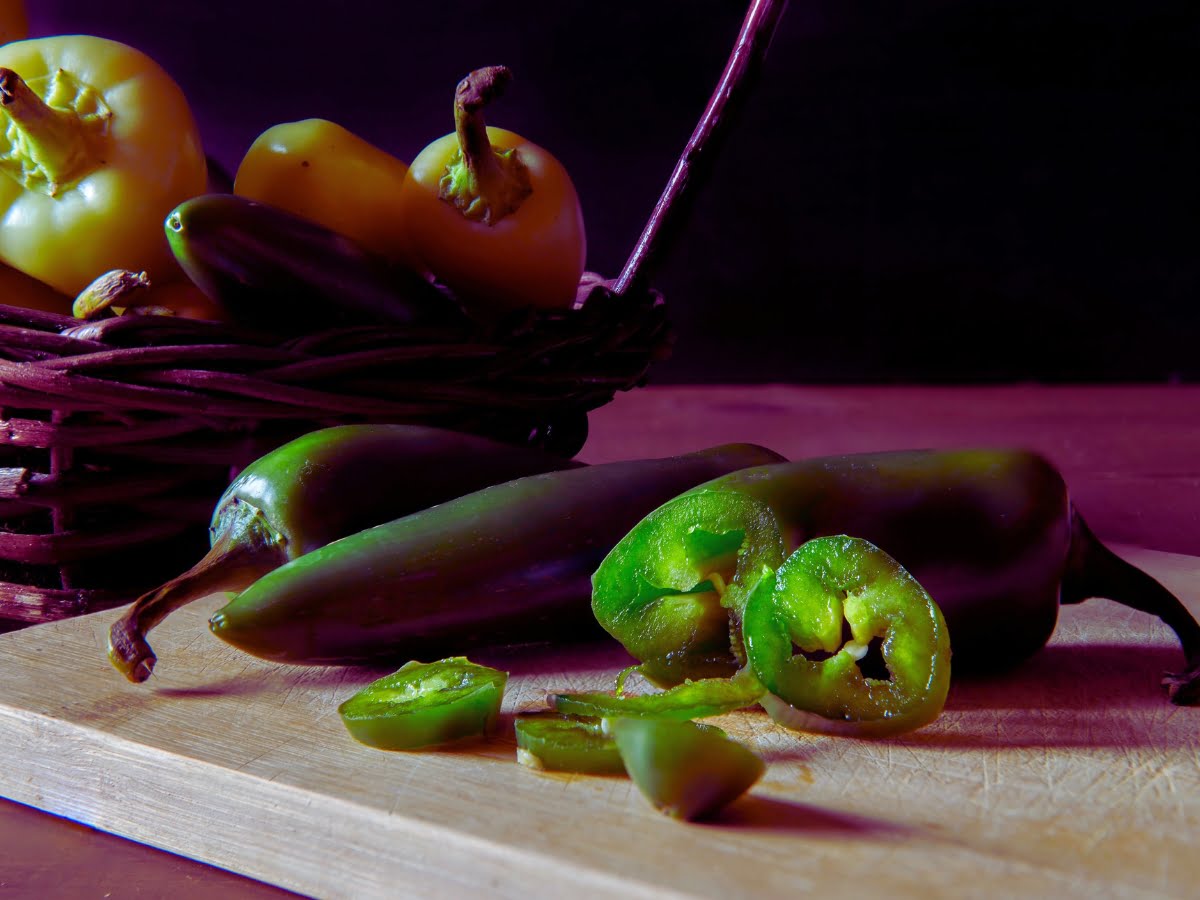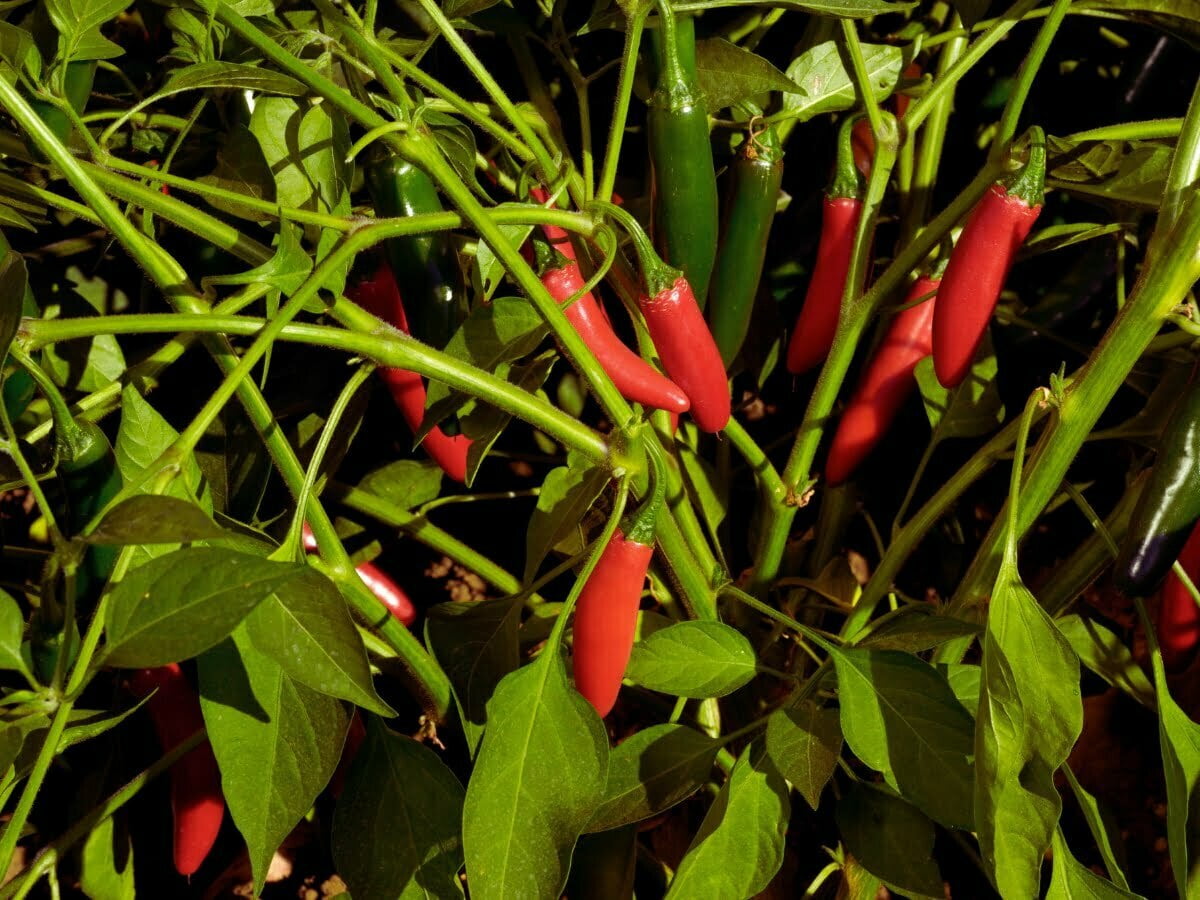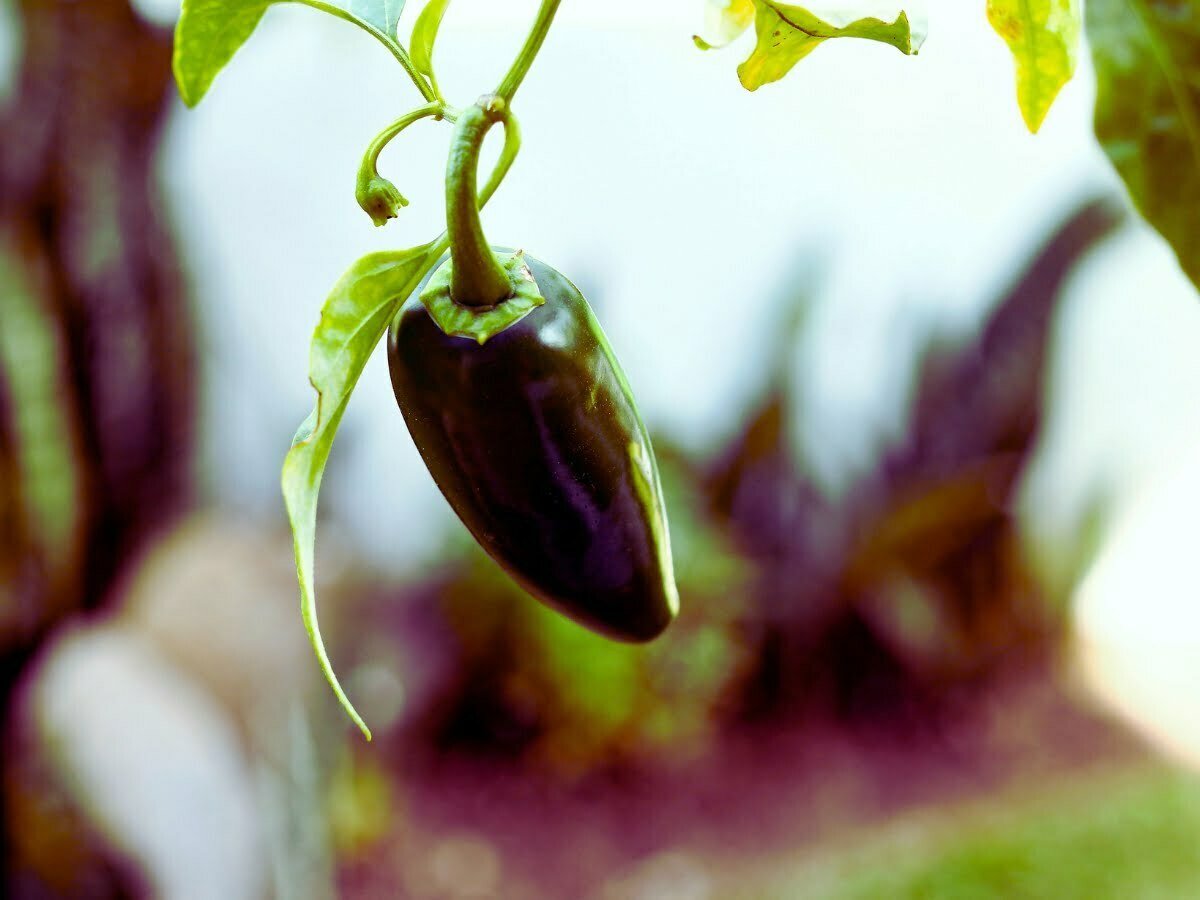Jalapeños: The Fiery Gems of Culinary Delight
Welcome to our comprehensive guide on jalapeños, the beloved peppers that add a zesty kick to countless dishes around the world. In this article, we delve deep into the fascinating world of jalapeños, exploring their origins, characteristics, health benefits, and culinary applications. Join us on this spicy adventure as we uncover the secrets behind these vibrant peppers and unlock the full potential of their fiery flavors.
What is Jalapeño?
The Jalapeño Pepper: A Flavorful Heat Bomb
At the heart of the jalapeño experience lies the Jalapeño pepper itself. With its iconic elongated shape and vibrant green color, this pepper holds a special place in the hearts of spice enthusiasts and food lovers alike. Known for its moderate to high heat level, the jalapeño brings both a fiery kick and a rich, distinctive flavor to various dishes.
Description of Jalapeño Pepper and Its Characteristics
Jalapeños typically measure around 2 to 3.5 inches in length and have a conical shape. When fully mature, they transition from green to red, offering a slightly sweeter flavor profile. The heat of a jalapeño can vary from mild to moderately hot, depending on factors such as growing conditions and ripeness.
Differentiating Between Jalapeños, Chili, and Capsicum
While jalapeños are often referred to as chili peppers, it’s important to note that not all chili peppers are jalapeños. Jalapeños belong to the Capsicum annuum species, which includes a wide variety of peppers ranging from mild to extremely hot. Capsicum annuum also encompasses bell peppers, which lack the spiciness of jalapeños.
Jalapeño in Indian Cuisine
Spice Infusion: Jalapeños in the Indian Kitchen

In the diverse tapestry of Indian cuisine, jalapeños have found their place, bringing a delightful twist to traditional flavors. Let’s explore the unique role that jalapeños play in Indian cooking, their Hindi name, and discover some alternatives for those seeking similar tastes.
Hindi Name of Jalapeño Pepper
In Hindi, jalapeños are commonly known as “hari mirch,” which translates to “green chili.” This name reflects the vibrant green hue and spiciness of jalapeños.
Use of Jalapeños in Indian Cooking
Jalapeños find their way into various Indian dishes, adding a punch of heat and flavor. They are often used in chutneys, pickles, and as a key ingredient in fusion recipes. Their versatility allows them to elevate the taste of curries, biryanis, and even street food delights.
Indian Alternatives to Jalapeños
For those seeking alternatives to jalapeños in Indian cooking, there are several options available. Green chilies, such as the popular “bhavnagri mirch” or “banarasi mirch,” offer a similar heat level and can be used as substitutes. Additionally, green Thai chilies or serrano peppers can provide a comparable fiery kick.
Health Benefits of Jalapeños
Ignite Your Health: The Nutritional Powerhouse of Jalapeños
Beyond their culinary allure, jalapeños also offer an array of health benefits. From boosting digestion to supporting the immune system, let’s explore the nutritional value and potential advantages of incorporating jalapeños into your diet.
Nutritional Value and Potential Health Benefits
Jalapeños are low in calories and rich in vital nutrients, including vitamin C, vitamin B6, and dietary fiber. These peppers are also a great source of capsaicin, a compound known for its antioxidant and anti-inflammatory properties. By consuming jalapeños, you may promote healthy digestion, metabolism, and even strengthen your immune system.

Exploring Heat: Jalapeño vs. Ghost Pepper
The Fiery Face-Off: Jalapeño vs. Ghost Pepper
When it comes to heat, jalapeños have their place on the Scoville scale. However, in the realm of super-hot peppers, the ghost pepper takes center stage. Let’s compare the heat levels of jalapeños and ghost peppers, while exploring the nuances of their spiciness.
Comparison Between Jalapeños and Ghost Peppers
Jalapeños typically range from 2,500 to 8,000 Scoville Heat Units (SHU), while ghost peppers, scientifically known as Bhut Jolokia, can surpass 1 million SHU. This staggering difference in heat level sets the two peppers apart, making ghost peppers one of the hottest peppers on the planet.
Understanding the Scoville Scale and Heat Levels
The Scoville scale is a measurement system used to quantify the spiciness of peppers. It assigns a numerical value to each pepper based on the concentration of capsaicinoids, the compounds responsible for their heat. The higher the number, the hotter the pepper. Jalapeños, although spicy, sit in the mid-range of this scale, making them accessible to many heat enthusiasts.
In other words, Scoville Heat Units (SHU) measure the heat or spiciness of chili peppers and other spicy foods. It quantifies the concentration of capsaicin, the compound responsible for the sensation of heat. The higher the SHU value, the hotter the pepper.
Taste Profile of Jalapeños
Beyond Heat: The Complex Flavors of Jalapeños
While jalapeños are known for their heat, they offer more than just a fiery kick. Let’s delve into the taste profile of jalapeños, exploring their unique flavors, culinary uses, and delicious pairing suggestions.
Describing the Flavor and Heat of Jalapeños
Jalapeños boast a distinctive flavor profile characterized by a balance of heat, tanginess, and slight earthiness. The heat, although present, is moderate compared to some other chili peppers. This allows the flavor of the pepper to shine, making it a popular choice for those seeking a pleasant kick without overwhelming the taste buds.
Culinary Uses and Pairing Suggestions
Jalapeños’ versatility makes them a prized ingredient in countless dishes. They can be used fresh, pickled, or roasted, offering different flavor profiles in each form. From salsas and guacamoles to stuffed jalapeños and spicy cocktails, the possibilities are endless. Pairing jalapeños with ingredients such as lime, cilantro, cheese, and avocados can enhance their flavors and create culinary harmony.
Indian Chili Varieties
A Colorful Tapestry of Spice: Indian Chili Varieties
India, with its vast culinary heritage, is home to a rich assortment of chili varieties. Let’s explore the Indian red pepper and green chillies, understanding their distinct characteristics, regional preferences, and spice levels.
Introduction to Indian Red Pepper and Green Chillies
Indian red pepper, commonly known as “Lal Mirch” in Hindi, encompasses a range of chili varieties. From the mildly spiced Kashmiri chili to the fiery Byadgi chili, each has its own unique flavor and heat profile. Green chillies, on the other hand, offer a fresh and vibrant taste, playing a significant role in Indian cuisine.
Regional Preferences and Spice Levels
Indian cuisine boasts a remarkable diversity of regional flavors, with each region having its own chili preferences. For example, in the southern state of Andhra Pradesh, the Guntur Sannam chili is highly favored for its fiery heat. In Rajasthan, the Mathania chili adds a distinctive flavor to traditional dishes. Understanding these regional preferences can help navigate the vast array of Indian chili varieties and tailor spice levels to personal taste.
Peppers in Indian Cuisine
The Spice Chronicles: Peppers in Indian Cooking
Peppers, including jalapeños, hold a significant place in the tapestry of Indian cuisine. Let’s explore the historical context and cultural associations peppers have in Indian cooking, appreciating their impact on flavors and culinary traditions.
Significance of Peppers in Indian Cooking
Peppers have been integral to Indian cuisine for centuries, adding depth, complexity, and a hint of heat to dishes. They play a pivotal role in spice blends, such as garam masala and curry powders, infusing them with robust flavors. Peppers also lend their vibrant colors to traditional dishes, making them visually appealing.
Historical Context and Cultural Associations
The use of peppers in Indian cooking dates back to ancient times. Historical texts and archaeological findings highlight the significance of spices, including peppers, in trade routes and cultural exchanges. Peppers have not only shaped Indian cuisine but also contributed to the country’s cultural identity, making them an essential part of its culinary heritage.
Substitutes for Jalapeños in Indian Recipes
Spiceful Alternatives: Substitutes for Jalapeños in Indian Dishes
For those seeking alternatives to jalapeños in Indian recipes, there are various options available. Let’s explore some substitutes that can help achieve similar flavors and heat levels, ensuring the desired spiciness and taste in your culinary creations.
Alternatives to Jalapeños in Indian Dishes
When jalapeños are not readily available, green chilies such as bhavnagri mirch, banarasi mirch, or green Thai chilies can be used as substitutes. These chilies provide a comparable level of heat and can impart a similar zesty kick to your dishes. Experimenting with different chili varieties allows you to tailor the spice level according to your preference.
Suggestions for Achieving Similar Flavors and Heat
To recreate the flavor profile of jalapeños, consider combining alternative chilies with ingredients like lime juice, cumin, or coriander powder. This can help mimic the tanginess and earthy undertones of jalapeños. Balancing the heat with other spices and ingredients is the key to achieving a harmonious flavor in your Indian recipes.
Exploring the World’s Hottest Peppers
The Quest for Fire: An Overview of the Hottest Peppers Globally
For those who dare to venture into the realm of extreme spiciness, the world’s hottest peppers await. Join us as we explore some of these scorching varieties, including the current record-holder, pushing the boundaries of heat tolerance.
Overview of the Hottest Peppers Globally
The pursuit of heat has led to the cultivation of several exceptionally hot pepper varieties worldwide. Peppers like the Carolina Reaper, Trinidad Moruga Scorpion, and 7 Pot Douglah have gained legendary status among spice enthusiasts, pushing the boundaries of spiciness.
Highlighting the Current Record-Holder
At the time of writing, the Carolina Reaper holds the Guinness World Record for being the hottest chili pepper. With its blistering heat level exceeding 1.5 million SHU, this pepper demands respect from even the boldest chili aficionados.
FAQs: Jalapeño and Beyond
Unveiling the Pepper Mysteries: FAQs on Jalapeños and More
As we conclude our journey through the world of jalapeños, let’s address some common questions and provide additional insights on pepper-related queries. Delve into the depths of pepper knowledge and satisfy your curiosity.
Answering Common Questions About Jalapeños / Frequently Asked Questions (FAQs)
Is jalapeño chili hot?
Jalapeños are known for their moderate level of spiciness. While they do possess a notable heat, they are generally milder compared to some of the hotter chili peppers. The heat level of jalapeños can vary depending on factors like ripeness and individual tolerance.
Is jalapeño the same as capsicum?
Jalapeños and capsicum, although belonging to the same botanical family, are not the same. Capsicum refers to a broader category of peppers, including bell peppers and chili peppers. Jalapeños, on the other hand, are a specific type of chili pepper known for their distinct flavor and moderate heat.
Is jalapeño vegetarian or non-vegetarian?
Jalapeños, like all plant-based peppers, are vegetarian. They are derived from the fruit of the jalapeño pepper plant and are widely used in vegetarian and vegan cooking to add flavor and heat to various dishes.
Why are jalapeños so popular?
Jalapeños have gained popularity worldwide due to their unique combination of flavor and heat. They offer a pleasant balance of spiciness and tanginess, making them versatile for use in a wide range of cuisines. From Mexican to Indian dishes, jalapeños add a zesty kick and enhance the overall taste experience.
What do jalapeños taste like?
Jalapeños have a distinct flavor profile that combines a mild, grassy sweetness with a moderate level of heat. They offer a pleasant balance of flavors, which can vary slightly depending on factors like ripeness and cooking method. Overall, they provide a delightful blend of tanginess, freshness, and subtle spiciness.
Is jalapeño the spiciest pepper?
No, jalapeños are not considered the spiciest pepper. They fall into the mid-range of the heat scale when compared to other chili peppers. Peppers like habaneros, ghost peppers, and Carolina Reapers are much hotter and rank higher on the Scoville scale, which measures the spiciness of peppers.
Why is it called jalapeño?
The word “jalapeño” originates from the Nahuatl language, spoken by the Aztecs. The term “jalapeño” translates to “from Xalapa,” a city located in the Veracruz region of Mexico. This is where the jalapeño pepper is believed to have originated and gained prominence in Mexican cuisine.
Why are jalapenos so popular?
Jalapeños have gained popularity due to their versatility and unique flavor profile. Their moderate heat level makes them accessible to a wide range of palates, while their tangy and slightly sweet taste adds depth to various dishes. Jalapeños can be used in salsas, dips, stews, and more, making them a beloved ingredient in many cuisines.
Is eating jalapeños good for the skin?
While jalapeños offer various health benefits, their impact on the skin is primarily indirect. The presence of vitamins A and C, as well as antioxidants in jalapeños, can support overall skin health by promoting cell regeneration and protecting against oxidative stress. However, it’s important to note that individual reactions to spicy foods may vary, and consuming jalapeños in excess may cause discomfort for some individuals.
Is pepper seed good for health?
Pepper seeds, including those found in jalapeños, contain beneficial compounds and nutrients. They are a source of dietary fiber and can provide trace amounts of vitamins and minerals. Additionally, certain compounds found in pepper seeds, such as capsaicin, have been studied for their potential health benefits, including anti-inflammatory and antioxidant properties. However, it’s important to consume pepper seeds in moderation and consider personal dietary needs and preferences.
Conclusion
A Flavorful Finale: Unlocking the Versatility and Appeal of Jalapeños
As we wrap up this comprehensive guide on jalapeños, we hope you’ve gained a deeper understanding of these vibrant peppers and their impact on the culinary world. From their distinct flavor profile and health benefits to their place in Indian cuisine, jalapeños offer a delightful balance of heat and taste. Embrace the versatility of jalapeños, experiment with their flavors, and ignite your culinary creations with their fiery charm. So, spice up your dishes and savor the tantalizing allure of jalapeños—one zesty bite at a time.
Note: This article is purely informational and should not be considered medical advice. Please consult a healthcare professional before making any changes to your diet or lifestyle.








